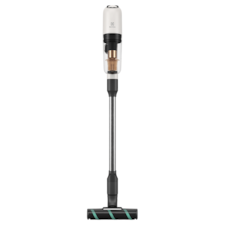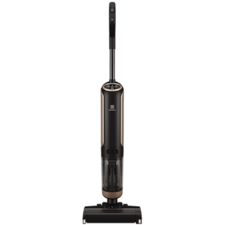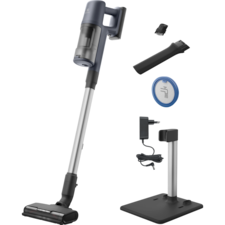We’ve all experienced that moment when stepping into your car, only to find crumbs on the seats, dust on the dashboard, and dirt embedded in the carpets. A clean car interior doesn’t just look better - it feels better, improves air quality, and even protects your vehicle’s resale value.
That’s why knowing how to clean a car interior with a vacuum cleaner is a must-have skill for every car owner. In this guide, you’ll learn a thorough, tool-based approach to remove grime from every corner, restoring comfort and freshness with minimal effort.
Essential tools and supplies for car interior cleaning
Before we begin, here’s what you’ll need to clean your car interior effectively and efficiently.
- Vacuum cleaner requirements: Start with a vacuum cleaner that suits your setup - portable or handheld models offer flexibility for tight spaces, while full-size units often deliver stronger suction.
- Must-have attachments: Equip your vacuum with a crevice tool for narrow gaps, an upholstery brush for seats, a wide nozzle for floor mats, and an extension hose to reach under seats and into deep footwells. Check out Electrolux’s high-quality vacuum cleaner accessories that ensure the best cleaning performance.
- Basic cleaning supplies: Beyond the vacuum, gather cleaning essentials: microfiber cloths for dusting and wiping, an all-purpose cleaner for plastic and vinyl surfaces, a glass cleaner for windows and mirrors, and an upholstery cleaner for fabric or leather.
- Optional tools for detailing: For a deeper clean, optional tools like detailing brushes, compressed air, and even a steam cleaner can help dislodge stubborn dirt and revitalize surfaces.
How to clean car interior with vacuum cleaner: A step-by-step guide
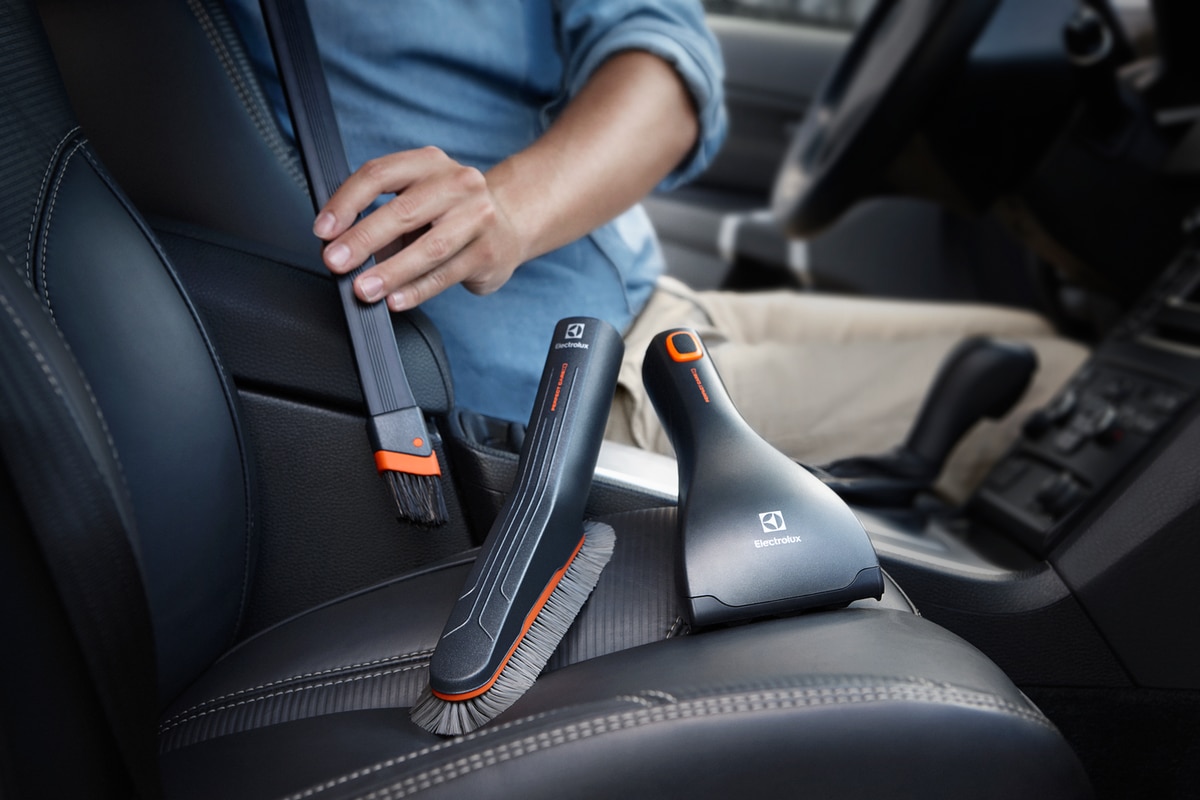
Here’s a step-by-step guide on how to clean car interior with a vacuum cleaner, covering every surface for a truly fresh finish.
Step 1: Remove trash and large debris
Begin by clearing out any loose trash, wrappers, empty bottles, and large debris. Check cup holders, door pockets, under seats, and in the glove compartment. Removing clutter makes vacuuming more effective and prevents tools from getting jammed.
Step 2: Take out floor mats and seat covers
Remove all removable floor mats and, if applicable, seat covers. Shake them out outside the vehicle to loosen dust and dirt, then set them aside for separate cleaning. This allows unobstructed access to carpets and floorboards.
Step 3: Vacuum seats and upholstery
Using an upholstery brush attachment, gently vacuum the seats, paying close attention to seams and crevices where crumbs and dust accumulate. For cloth seats, move in overlapping strokes. For leather or vinyl, use a soft brush to avoid scratching.
Step 4: Vacuum floors and carpets
Switch to a wide nozzle or crevice tool for the floors. Start at the front footwells and work your way to the back, making sure to reach under seats and along edges. Floor carpets trap a surprising amount of fine dust, so go over them slowly and methodically.
Want to make this easier? Electrolux wet and dry vacuum cleaners offer versatile suction, powerful airflow, and dual-mode cleaning for both dry dust and spilled liquids - ideal for deep cleaning car interiors efficiently.
Step 5: Clean vents, console, and dashboard
Use a detailing brush or compressed air to dislodge dust from air vents, followed by a quick vacuum to collect loosened particles. Wipe down the dashboard, console, gear shift, and buttons with a microfiber cloth dampened with all-purpose cleaner. Be gentle with screens and glossy surfaces.
Step 6: Clean the interior windows and mirror
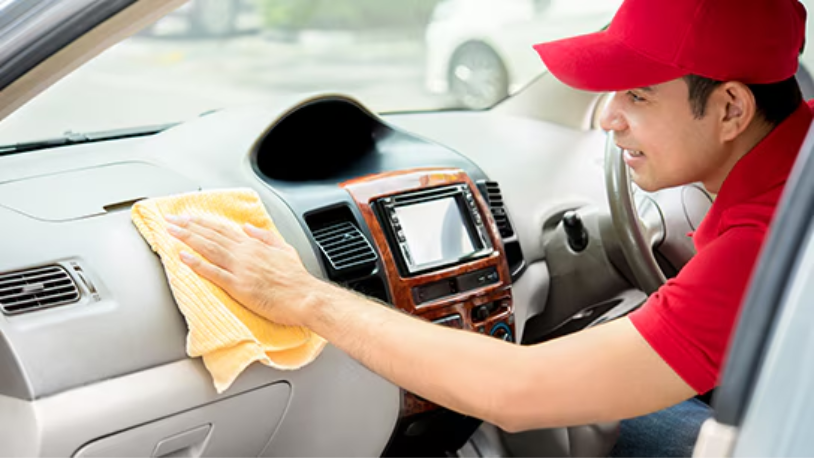
Spray glass cleaner onto a clean microfiber cloth (not directly on the surface to avoid streaks), and wipe down all interior windows and the rearview mirror. Clean in circular motions for best results and finish with a dry section of the cloth to polish.
Step 7: Detailed cleaning for hard-to-reach areas
Use the crevice tool or a narrow detailing brush to access areas between seats, along seat rails, under pedals, and in small storage compartments.
For stubborn stains on upholstery or carpet, apply upholstery cleaner, scrub gently, and blot dry.
For tough grime in seams or corners, a steam cleaner can help lift residue without damaging materials.
Step 8: Tackle tough odours
Bad smells often hide within fabric. Sprinkle a light layer of baking soda on cloth seats and carpets, let it sit for 15–30 minutes, then vacuum thoroughly.
For persistent odours, use a fabric-safe deodorizing spray or an interior-specific air freshener. If smells linger, inspect for spills or moisture buildup beneath mats or in the trunk.
Read more:
Common mistakes to avoid when cleaning car interior
Knowing how to properly clean your car interior is a major advantage when you want to take care of your car but learning how to avoid mistakes that can cause damage or reduce cleanliness is just as important.
Here are common pitfalls to steer clear of - and how to get it right.
- Over-wetting surfaces: Using too much water can lead to mildew, stained upholstery, or damaged electronics. Always wring out clothes and avoid soaking materials.
- Using the wrong cleaning products: Not all cleaners are safe for leather, plastic, or fabric. Check product labels and test in a hidden area first to prevent discoloration or damage.
- Scrubbing too aggressively: Harsh brushes or excessive pressure can scratch or wear down surfaces. Use soft-bristled tools and microfiber cloths for a safer clean.
- Skipping drying time: Moisture left behind can lead to odors or mold. Ensure windows are cracked or car doors are open to allow proper ventilation post-cleaning.
- Vacuum misuse: Avoid using high suction on delicate materials. Choose the right attachments and settings based on the surface you're cleaning.
- Cleaning too often or not enough: Over-cleaning can degrade finishes, while infrequent cleaning allows dirt buildup. Aim for a monthly deep clean with light touch-ups in between.
How often should you clean the inside of your car?
How often you clean your car interior depends on how frequently you drive and what you carry - but a good general rule is to do a thorough interior clean once a month. That said, if you have kids, pets, or eat in your car regularly, consider spot-cleaning high-traffic areas like seats and floor mats weekly.
By vacuuming, wiping down surfaces, and removing trash regularly, it not only maintains appearance but also helps prevent buildup of allergens, bacteria, and odors over time.
How to keep your car interior clean between deep cleans
Once your car interior is spotless, the goal is to keep it that way for as long as possible - and small habits can make a big difference.
- Use seat covers and removable floor mats: These protective layers make cleanup easier and shield your car’s interior from dirt, spills, and daily wear. Simply remove and wash them as needed to maintain a fresh look.
- Keep a trash bag or small bin handy: Prevent clutter from building up by having a designated spot for wrappers, receipts, and other waste. Empty it regularly to keep your interior tidy and odor-free.
- Vacuum weekly - even just the basics: A quick vacuum of the floor mats and seats once a week helps prevent crumbs, dust, and debris from settling deep into fabrics and becoming harder to remove.
- Avoid eating in the car: Food crumbs and greasy residue are major causes of stubborn dirt and unpleasant smells. Skipping in-car meals goes a long way in keeping your interior clean.
- Maintain small habits consistently: These simple routines don’t take much time but make a big difference. With consistency, your car will stay cleaner between deep cleaning sessions.
Why the right vacuum makes all the difference
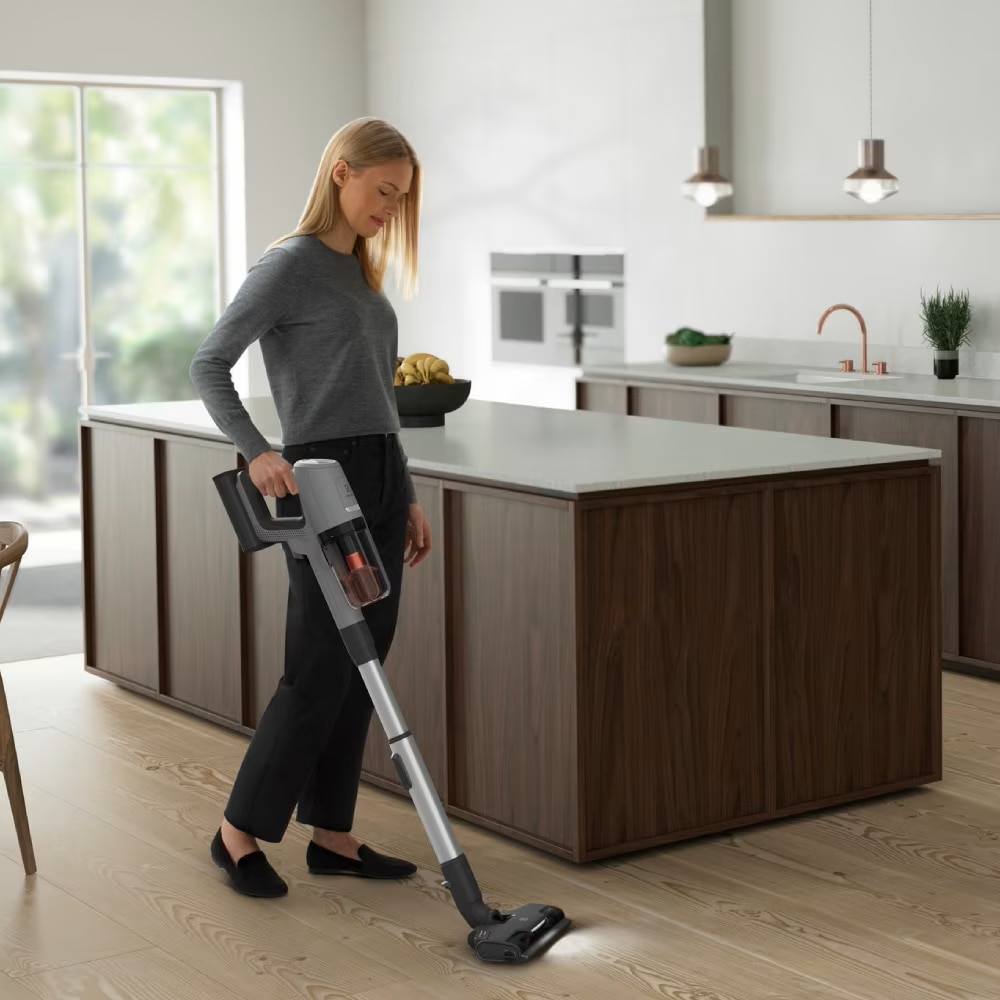
A clean car interior doesn’t just elevate your driving experience - it reflects your care for the space you spend so much time in. By following this guide on how to clean car interior with vacuum cleaner, you can keep your vehicle fresh, comfortable, and well-maintained.
To make every clean more efficient, consider the power and convenience of Electrolux vacuum cleaners. Designed with features like wet and dry functionality, versatile attachments, and powerful suction, they help lift debris from every corner with ease. Plus, they contribute to a healthier living environment by minimizing dust and allergens.

